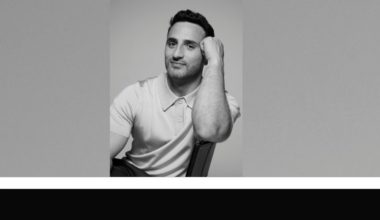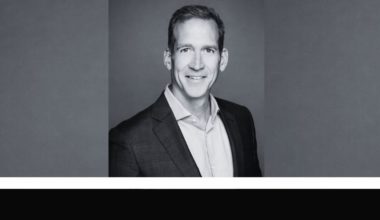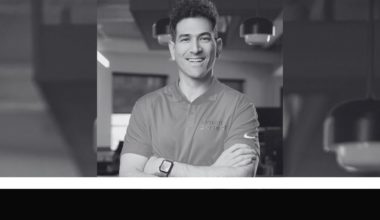Yaron Shapira is co-founder and CEO at 8fig. He is an entrepreneur at heart, and has founded multiple successfully acquired startups. These include mobile payment app Check, travel and culture outlet The Culture Trip, and international trading payment security platform Qlarium. Through his work experience in payment systems, content creation, and the supply chain, he noticed a pressing need for an AI CFO for lean eCommerce businesses without an executive team. These small businesses often struggle to make wise financial decisions without a CFO, stunting their growth.
He, therefore, co-founded 8fig in 2020 with the goal of democratizing ecommerce and providing small ecommerce businesses with the resources they need to grow. Yaron has a BSc. in Computer Science, a B.A in Economics and an M.B.A. from Bar Ilan University, Israel.
Please tell us a little bit about your business – what is 8fig all about?
8fig is not just a company or solution-provider – it’s a growth partner for ecommerce sellers that offers them immense value on one platform. Our goal is to democratize ecommerce by giving small ecommerce businesses the tools they need to thrive and grow. You see, most small ecommerce businesses are run by a solopreneur, or just two or three people. They don’t have the knowledge and expertise that comes with having an executive team, so they struggle to make the right decisions when it comes to things like cash flow, operations, marketing, and more. They also lack working capital.
We decided to build a platform that serves as a virtual CXO, providing them with an AI CFO, CMO, and COO. It gives these small sellers the data-driven tools they need to make better business decisions and plan for the long-term, so that they are constantly on the right track to scale.
We also offer a sales analytics dashboard and a supply chain planning tool, in addition to a cash flow-friendly, flexible financing solution to provide them with working capital. This is just the beginning in terms of what we are planning to do to help small ecommerce sellers succeed and scale.
Tell us a little bit about your background and how you started your company.
I was able to start 8fig thanks to an eventful career that began in engineering. I co-founded a mobile payments company called Check, and that’s where I acquired my expertise in payments and mobile app development. When that company was acquired by Intuit, I joined another company specializing in content creation. Following that, I co-founded a company called Qlarium with the same partners I’d go on to found 8fig with. Qlarium dealt with underwriting the risks in supply chains, which helped us to understand just how important supply chains are in ecommerce.
After exploring the pain points of the industry, we learned that the main problem for ecommerce sellers is their ability to grow, and that they often lack a strong executive team guiding them towards making the right decisions. So that’s where 8fig came in – to act as that missing “guide” for ecommerce sellers to help them with their planning. The combination of our experience gained from payments, mobile app development, content creation, and supply chains enabled us to develop a solution that truly addresses these needs.
What would you say are the top 3 skills needed to be a successful entrepreneur, and why?
- Good listening – Listen a lot. The people around you probably know a lot of things that you do not.
- Imagination – Try to build something great in your mind. Think about the challenges you’ve learned from clients, and try imagining the solution.
- Business sense – Every entrepreneur needs a bottom line. Imagining and listening will take you far, but the bottom line is what drives profits.
What are your plans for the future, how do you plan to grow 8fig?
We want to build a lot more value for our clients. 8fig has collected tons of data, much more than any company in our industry including the big platforms and networks. We have proprietary data that no one else has, and we have it at scale. We plan to use this data in order to drive value to our clients in a way that no one else is even close to doing. This data, combined with our unique experience in the supply chain, engineering, content creation, and payments, allows us to build a lot of value into our platform. This is what’s going to drive clients to 8fig. The tools we currently offer clients or that we will soon launch, such as a virtual CXO, sales analytics, payment processing, and more, are just the tip of the iceberg in terms of what we are building. We are constantly expanding our offerings and we plan to add a lot more value for our clients.
How have the pandemic and lockdown affected you or your new business?
This is actually more related to what’s happened in the ecommerce industry as a result of the pandemic. People were driven to use ecommerce, to buy online. They were locked down in their houses so they were forced to start buying online, and they got used to it. They found that it’s quite nice. They could get great products with great service, and it was very convenient. This is driving the industry from brick and mortar stores to ecommerce stores, and it really helps society, but it also helps our business.
How do you separate yourself from your competitors?
Mainly through value. We are helping our clients, not just with funding – we are helping them with planning. When circumstances change, as ecommerce sellers know happens on a weekly basis, the plans also need to change. This is exactly what we do. It’s not just one plan that you set and are done. We know it doesn’t work like that. We set a plan, and then we adjust the plan as we go. This is exactly what we do for our clients and this is what separates us from the competition.
What were the top three mistakes you made starting your business, and what did you learn from them?
- You need to separate between your communication with clients and your decision-making. They should be two separate functions in the company. Whoever communicates with the client is very biased toward the client and is in their favor, and this is how it should be. This is their function in the organization. They need to take care of the client and help them through challenges. On the other hand, whoever makes the decisions needs to be data-driven and not biased. They shouldn’t be biased toward the company and they also shouldn’t be biased toward the client. A biased decision-maker might drive non-optimized decisions. So you need to separate these two functions. We didn’t do it in the beginning, we learned it along the way, and today it’s separated
- Not all growth is created equal. While growth is indeed a good goal for many companies, it’s vital to focus on growing meaningfully, not just growing fast. When I say growing meaningfully, I mean keeping your customers’ and partners’ needs in mind when planning your growth goals. Take the time to research and expand your knowledge regarding your ecosystem, and use this information when making decisions about the future of your business. Ask yourself if your growth will provide added value to your customers; you have to be focused on helping your customer thrive. One of my earlier companies grew very quickly and could have gone further if we optimized more to our customer needs.
- Hiring an HR manager early on is important. A high quality HR presence adds a great deal of value to your company. HR is necessary for precisely establishing your business’s DNA, mission, and identity as well as encouraging the wellness and success of your employees. Hiring an HR manager early saves time and energy while injecting confidence into the day to day management of your business.
Tell us a little bit about your marketing process, what has been the most successful form of marketing for you?
The fact that we focus on creating content is a big part of our success. It’s less about trying to push our message to clients. Instead, we sat down and created content – it could be white papers, webinars, video clips. We created a lot of content for the community of ecommerce sellers that gives them value. Once you give them value, people start to listen to you. Once people start to listen to you, they’re going to follow you. So this is the direction that we decided to go in terms of marketing. We’re not trying to push our message, we’re trying to give value. I think this is what works.
What have been your biggest challenges and how did you overcome them?
Our idea, the way that we support ecommerce, the way that we analyze the supply chain, and our approach to ecommerce funding, is super unique. The challenge was to go to investors and banks and to explain this idea to them and get them to join us, to support us. We needed their support in order to actually grow. The way that we overcame this challenge was just through execution. We went to our first client and we did an excellent job. We went to our second client and we did again. We went to the third, the fourth, the fifth, the sixth, the seventh, and we did a great job. Then we came back to the investors and banks with these results. It’s super hard to argue with results. That’s how we overcame this very big challenge.
What was your first business idea and what did you do with it?
I called my first business idea “digital video”. Back then, we had a VCR in our homes. If you wanted to record a movie on TV that started at a certain time, you scheduled the recorder to record the movie at that time. If you came back home an hour later, you couldn’t watch the movie. You had to wait until the movie ended, and only then could you start to watch the movie from the beginning. So I said, let’s do digital video instead of the VCR. Then, it will keep on recording the movie, but I’ll be able to start watching it whenever I want. This was my idea. I started thinking about it and I said, hey, you can even take the schedule of the TV shows and show it nicely, too. Just as I thought about this, within the next year, they started to sell TIVO in the USA. TIVO was the first solution to this problem, so I did nothing with my idea because someone else already did it and did it quite well. Today, of course, it’s not relevant anymore.
If you started your business again, what things would you do differently?
I actually think I wouldn’t do anything differently. This is not my first business, so I can tell you what we did right that we learned from previous businesses. In my previous businesses, we started from the technology. We saw a problem, and we created technology that solved this problem. When we had the technology, we went to the market and showed them: hey, we have this technological solution to your great problem. The challenge is that your solution may not be the best solution for the problem, and the problem might not be their number one problem. That makes it very hard. The solution is to make a pivot. All of the business advice that you’ll read from entrepreneurs is about not being afraid to make a pivot.
Another way to do that instead of pivoting, and in 8fig we didn’t pivot, is to start with the business. So on day one, we did not create technology. On day one we went to the client and we offered them a solution. They said, hey, this is a great solution for us, so we did everything manually – PDFs, Excel spreadsheets, emails with the client. This was the solution for the first time. We had no website and we had no application, we had nothing. Then we did it again with the second client, and with the third one. Once we saw that the business was working, that’s when we started to develop the technology. So in our case, the technology is catching up with business and not vice versa. The business is not trying to catch up with the technology.
What are the top 3 online tools and resources you’re currently using to grow your company?
- I personally use Google Data Studio. I find it to be extremely useful in creating data dashboards, connecting to databases, and presenting things in an easy and quick manner. It’s easy to distribute and accessible from anywhere.
- The 8fig team uses Mixpanel to track clients. The engineers are using a lot of their own tools to track tasks and bugs and priorities inside the team, too many for me to list here.
If you only had $1000 dollars to start a new business, knowing everything you know now, how would you spend it?
I would spend it on Google Ad words. I would take my idea, create a single landing page, which could cost between $50-100, and I would spend all the remaining money on Google Ad Words, trying to buy traffic. I would try to get the relevant keywords with microcopy, which is my ads, and see if people click. If people click, they come to my landing page, and then I see if people click through. If they do, there is a business. If they do not, you do not have a business. Try to get another $1,000 and try to think about another idea because this one doesn’t work.
What helps you stay driven and motivated to keep going in your business?
This is my character. It’s not a single piece of advice – I’ve worked in successful businesses, such as 8fig, and I’ve also been a part of less successful ventures. My drive comes from inside, from my character. Whatever I’m doing, I’m super focused. I care about it and think about it in my idle time. I experience problems and react to changing circumstances all the time. I like it and enjoy it, and this is what drives me internally.
How can readers get in touch with you?
You can contact me via Linkedin and email – yaron@8fig.co








